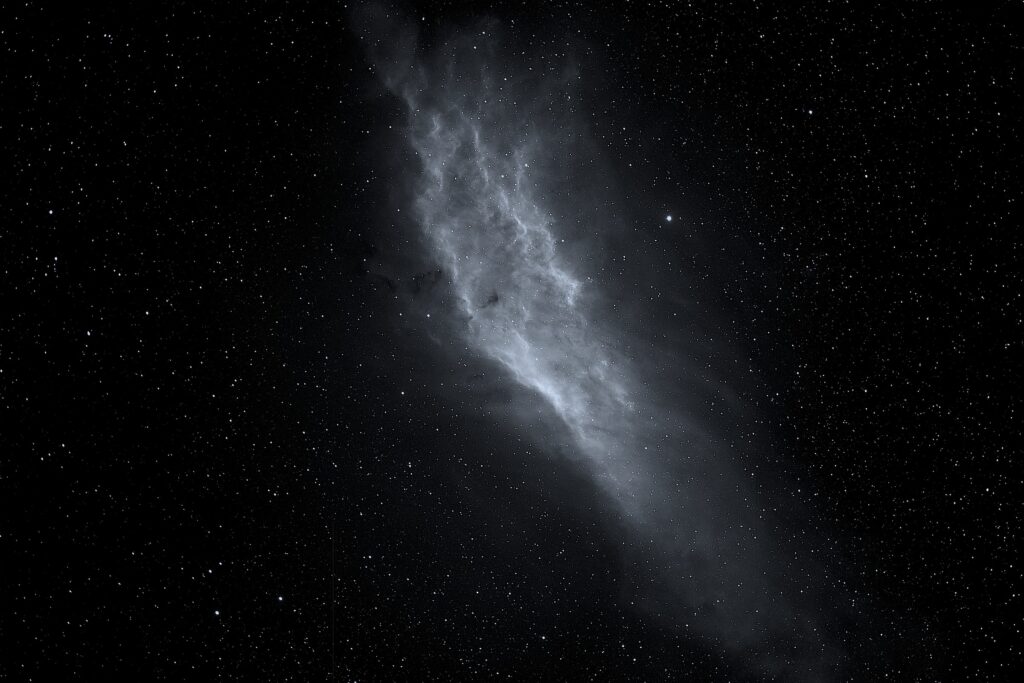An large emission nebula spanning 150 arcminutes in the constellation Perseus, the equivalent of 5 full Moons side by side. However, due to its very low surface brightness, it cannot be seen except as a faint gray nebulosity from a dark, moonless site. Color and detail only emerge in long exposure images.
The nebula is a large hydrogen cloud that is being illuminated by the hot, young, white-blue "O-class" supergiant star (Xi Persei) to the upper right. This star is emitting very energetic ultraviolet photons that strip electrons from the cloud's hydrogen nuclei. As the electrons quickly reconnect with hydrogen nuclei, they emit photons of discreet amounts of energy as they cascade down the energy levels toward the ground state near the atomic nuclei. The transition from the third to the second energy levels (n3 → n2 in the Balmer series) results in the emission of a photon with a wavelength (656 nanometers) that is red in the visible spectrum. Because this transition is very common, the nebula is dominated by the color red.
In summary, the vast hydrogen cloud that formed the stellar nursery from which Xi Persei was born is in turn illuminated by the energy imparted by its offspring. The nebula is 1,000 light years away.
The California Nebula in Perseus
Date Taken:October 20, 2010
Location Taken: Conditions of Location:FWH?M 1.44
Equipment Used:Takahashi Sky90 3.5" apochromatic refractor telescope with field flattener, Paramount ME mount, SBIG STL11000 CCD camera, Astrodon RGB filters.
Processing Used:12 x 300 seconds luminance, 7 x 200 seconds RGB, guided, 1x1 binning, processed in Maxim DL and Photoshop (total exposure 2 hours 10 minutes).
Distance from Location:1,000 light years
Constellation:Perseus (the "winged horse")
Other Link:
